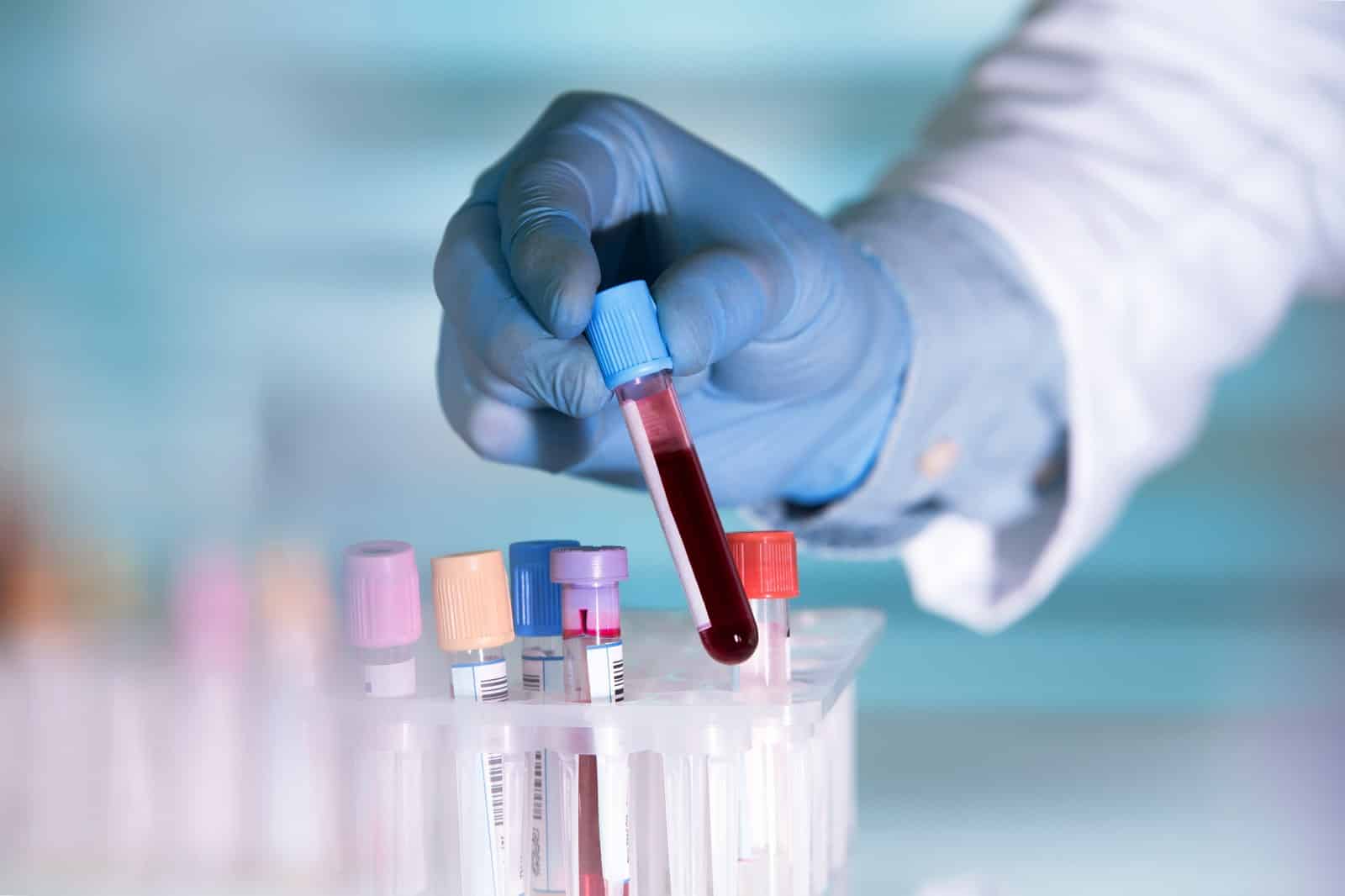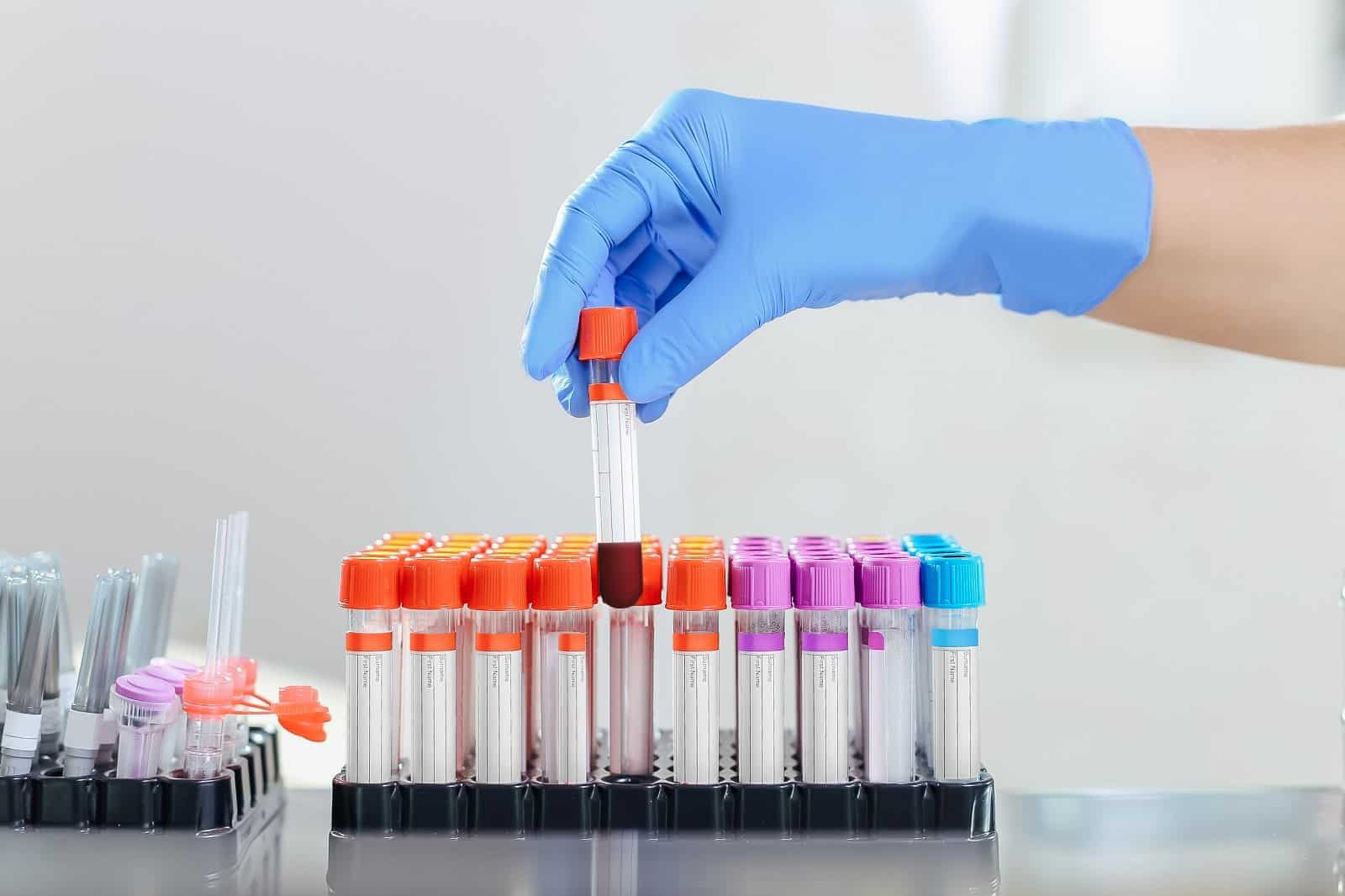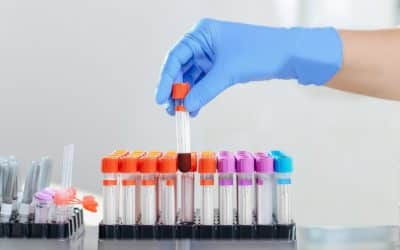
Most people have a “normal” blood test, thinking they are healthy.
Unfortunately, blood tests provide a crude and incomplete picture of our health.
People can have “A ok” blood tests and still be deficient in many micronutrients, suffering from inflammation, a bad thyroid gland, an unhealthy microbiome, pre-diabetes, increased genomic instability (e.g. an increased risk of double strand DNA breaks), fatty liver, a deregulated epigenome, accelerated aging, or many other problems.
To make a long story short: a blood test often provides only a limited, crude snapshot of our health.
Many commonly used blood biomarkers are not ideal to screen for diseases or problems. For example, measuring total, LDL and HDL cholesterol are not the best tests to assess cardiovascular risk.
And various biomarkers, like magnesium or B vitamin levels, are not a correct reflection of the real levels in your cells.
Nonetheless, blood tests still can be useful. But it’s important to interpret these tests with some reservations and caveats, and be mindful of their limitations.
There are various problems with blood tests. I list the most important ones below:
1. Cut-off values are not always ideal
Blood biomarkers have cut-off values: you should not have too much or too little of a specific substance in your body.
For example, you should have at least x mg/dl of vitamin y in your blood. If you have less than that, you are deficient.
However, these cut-off values are often “determined” in a crude way; based on old or inaccurate or crude measurements or studies.
Also, many cut-off values are derived by just looking at the “reference ranges” of the substance in a population.
So scientists look at which values are present in 95% of the population, and then determine these are the “good”, “healthy” or “required” values or levels.
But what if many people of the population are deficient in the nutrient? Then these cut-off values are based on a sick or unhealthy population.
Also, these values would not say much about the best or ideal blood levels for a long, healthy life. As mentioned before, for tens of thousands of years, people just had to stay alive long enough to reproduce. If a mild deficiency does not interfere too much with this in the first three decades or so of life (but would come back to bite you after five or six decades, when you are old, increasing the risk of cancer, heart disease or Alzheimer’s) then having these “suboptimal” values is still ok for mother nature.
Another problem is that these reference ranges or cut-off values are specific to populations (e.g. the diagnostic lab using reference ranges from the people who live close to the laboratory/got tested there), the device (some devices measure higher or lower levels compared to other devices), and the laboratories (their specific protocols and handling of the samples and machines).
Also, age, smoking status, medication, sex, circadian rhythms, weight, and ethnicity can impact the values of many biomarkers, but are hardly or never taken into account (R).
These insights explain why, over the decades, cut-off values had to be adjusted because the FDA realized that these values were too restrictive.
For example, not so long ago, only when you had vitamin D levels lower than 20 ng/ml you would be considered deficient. But then these cut-off values were increased to 30 ng/ml, while studies seem to indicate that ideal vitamin D levels for longevity could be even higher.
Another example is TSH (thyroid stimulating hormone). A too high level of TSH means your thyroid is not working properly (it’s too slow). Many labs will say your thyroid is not functioning well when TSH levels are higher than 4 mIU/L. However, many doctors disagree with this, claiming that TSH levels should be maximally 2.5 mIU/L. Nonetheless, most labs will still use the 4 mIU/L cut-off value.
2. Blood levels of many biomarkers fluctuate
The blood levels of many substances can fluctuate significantly during the day. If you just happened to get measured when levels are high (while most of the time being low), it could be wrongfully interpreted that there is no problem.
Examples of substances that fluctuate a lot are cortisol, hormones like testosterone, TSH, IGF (insulin like growth factor), and so on.
Some MDs try to solve this by measuring substances over time. So instead of measuring cortisol only once in the blood (not useful in most cases), they measure 24-hour secretion of cortisol in the urine. Such a test is more accurate, but still not perfect.

3. Various biomarkers cannot be properly measured
This is especially relevant for vitamins and minerals like magnesium, calcium, potassium, vitamin E, and so on. In most cases, these are measured in blood, not in the cells or in the fluid between the cells outside of the bloodstream (the interstitial fluid), where these nutrients are often present in different levels.
Furthermore, many minerals, vitamins and other substances are bound to proteins that transport them in the blood. So only the levels of the free floating substances (not bound) are measured (or one measures only the bound forms, not the free, active forms).
For minerals like calcium, potassium, magnesium, and vitamins, their values are often “normal” according to your blood test, while levels can be too low in the cells, or in specific tissues (like the brain).
Another example is vitamin B12. To “detect” vitamin B12 deficiency, this substance is often measured in the blood. However, people can have normal vitamin B12 levels and still be deficient. It can be more accurate to measure methylmalonic acid (MMA), which is a breakdown product of vitamin B12 (R).
Even better, the ratio of methylmalonic acid compared creatinine (so the methylmalonic/creatinine ratio) is measured, and homocysteine levels (R).
But even these measurements are not perfect. One can still be deficient in vitamin B12, while having a normal methylmalonic acid/creatinine ratio and normal homocysteine levels.
Therefore, it’s very important to also look at the complaints patients have; and perhaps to try a treatment with vitamin B12 to see if symptoms improve.
Another example is vitamin E. When measured in the blood, most people have “adequate levels of vitamin E.
However, if scientists actually look at what people eat (and calculate how much vitamin E they consume through their nutrition), around 90 percent of people do not reach the recommended daily intake of vitamin E (!).
And take into account that such “recommended daily amounts” that governments put forward are often still too low. They are all too often the minimum amount to not get seriously ill, or of which the consequences of a deficiency are measured with crude tools.
Or take potassium. The FDA recommends consuming at least 4,7 grams of potassium per day (in prehistoric times however potassium intake was more around 7-15 grams per day). Unfortunately, most people consume only around 2.5 grams of potassium per day.
However, in nearly all people potassium levels will be normal. Potassium levels mostly only are abnormal when very serious problems are going on, like kidney failure (or potassium levels can be “falsely” too high because the red blood cells in the blood sample are damaged, releasing potassium, leading to falsely elevated “blood” potassium levels).
So despite most people having normal vitamin E, vitamin B12, magnesium or potassium levels most people are deficient in these.
Learn more about the best supplements here.
4. Various biomarkers are not accurate to predict disease
Often, one relies too much on blood biomarkers to diagnose or dismiss a disease.
For example, to diagnose a thyroid problem, TSH (thyroid stimulating hormone) is measured. But TSH is not an ideal biomarker for thyroid disorders (R). TSH levels can often be normal, while one still has a deficient or malfunctioning thyroid.
Therefore, some doctors propose to do an iodine challenge test, in which people have to consume a large amount of iodine, and then during 24 hours the amount of iodine secretion is measured in the urine (if it’s too low, this could point to a thyroid problem).
Other MDs also look at antibodies against the thyroid gland, like anti-TPO and antithyroglobulin antibodies. Interestingly, people can have antibodies against their thyroid gland but still have normal TSH levels.
In such cases, most doctors will say there is no problem. But having anti-thyroid antibodies does already indicate a problem. The thyroid gland is being damaged, and will likely be further damaged, until the damage is so bad that lab tests will finally detect a problem (or not, given TSH levels are not that specific).
5. Many important substances cannot or are not measured
Most blood tests are far from complete and comprehensive.
Many important substances are not measured, or cannot be (properly) measured. For example, in most blood tests, one does not measure choline, omega-3 fatty acids, vitamin B6, vitamin B1, specific minerals and so on.
Also, more interesting, useful biomarkers, like DNA damage (e.g. double strand breaks), epigenetic dysregulation, or the amount of senescent cells (“senescent cell burden”) are not measured. These are interesting tests, but are not part of standard testing and are often too complicated or expensive.
So despite having had a blood test, many substances are not tested for, providing an incomplete picture.
6. Cut-off values are interpreted too narrowly
What if you are just one unit under or above a cut-off value? Do you have the disease or not?
For example, you are officially pre-diabetic when your fasting glucose levels are above 100 mg/dl (5.6 mmol/L). So if your value is 97 mg/dl, you are “healthy”?
Not really; elevated “normal” fasting glucose levels (e.g. of 95 mg/dl) could already be indicative of cardiovascular problems for example (R) (and an increased risk of dementia). So “high-normal” (or “low-normal”) levels can already be harbingers of trouble.
Therefore, interpret blood tests knowing that “where there is already some smoke, there is often fire”.
7. Cut-off values can be too lenient
A while ago, you only had problems with your blood sugar when your fasting blood glucose levels were above 126 mg/dl (7.0 mmol/L). Then the concept of pre-diabetes was introduced: you already have a significantly increased risk of diseases if glucose levels are higher than 100 mg/dl.
Now we see that levels even lower than 100 mg/dl can increase risk of diseases.
And one can still be at an increased risk of dying when fasting glucose levels are completely normal (not just “high normal”). After all, there are more accurate tests to diagnose insulin resistance.




